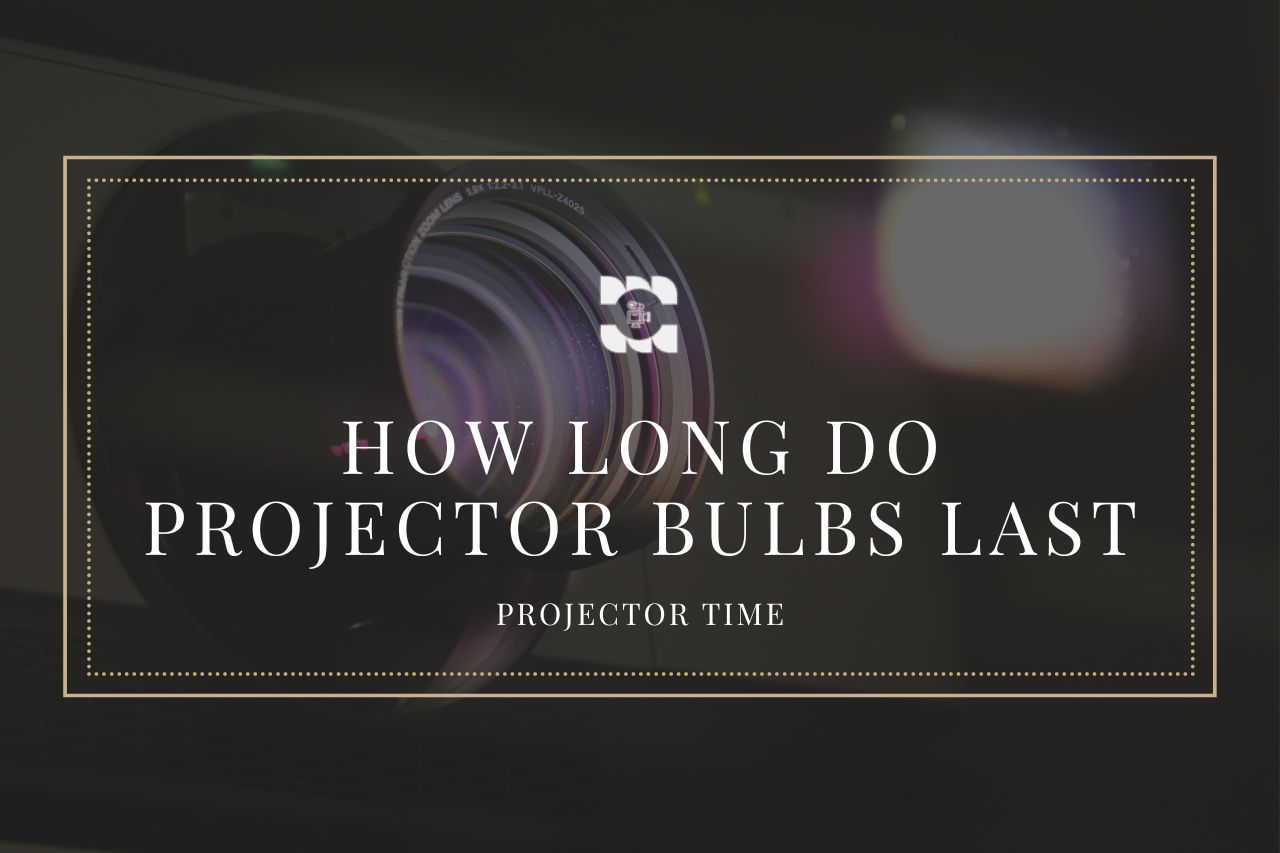Projector bulbs are a vital component of projectors and are responsible for producing high-quality images. As such, it’s crucial to understand how long they typically last and when they require replacement. This knowledge allows you to plan for bulb replacement, avoid downtime, and ensure your projector continues to deliver high-quality images.
The average lifespan of a projector bulb can vary based on the type of bulb and usage of the projector. It’s essential to keep track of the hours the bulb has been in use and replace it before it reaches its end-of-life stage. This ensures optimal image quality and prevents potential damage to the projector.
If you’re unsure when to replace your projector bulb or need more information on projector lamps, our blog provides comprehensive resources to help you make informed decisions. So, please take a moment to read through our blog and equip yourself with the knowledge to get the most out of your projector.
Relevant Blog Posts
Projector bulb types
Projector bulbs are available in various types, each with its advantages and disadvantages. Here are the three most common types of projector bulbs:
1. Standard projector bulbs
Standard projector bulbs are the most common type of projector bulb. They use a filament to produce light, filtered through a series of mirrors and lenses to create an image. These bulbs have been in use for decades and are relatively affordable. However, their lifespan is shorter than other bulbs and may produce more heat than LED or laser bulbs.
2. LED projector bulbs
LED projector bulbs are becoming increasingly popular due to their long lifespan and low power consumption. These bulbs use a diode to produce light and don’t require a filament or gas. LED bulbs can last up to 20,000 hours, significantly longer than standard bulbs. They are also more energy-efficient, which can lead to cost savings over time. However, LED bulbs can be more expensive to purchase initially.
3. Laser projector bulbs
Laser projector bulbs are the newest and most advanced type of projector bulb. They use a laser to produce light, producing brighter and more vivid images. Laser bulbs can last up to 30,000 hours, making them the longest-lasting projector bulb. They are also more energy-efficient than standard bulbs and produce less heat. However, laser bulbs are the most expensive projector bulb, requiring more advanced technology to operate.
Factors affecting projector bulb lifespan
Now that you know different types of lamps, it’s time to know the factors affecting their lifespan. Here are some of the most significant factors that can affect the lifespan of a projector bulb:
1. Environmental factors
Environmental factors such as temperature, humidity, and air quality can all impact a projector bulb’s lifespan. Dust, moisture, and extreme temperatures can all cause a bulb to fail prematurely. It’s essential to keep the projector in a clean, dry environment and ensure adequate ventilation to prevent overheating.
2. Frequency of use
The frequency of use can also affect the lifespan of a projector bulb. If the projector is used frequently, the bulb may burn out faster than if it is used only occasionally. It’s essential to monitor the lamp hours and replace the bulb before it burns out completely to avoid any downtime during critical presentations or events.
3. Type of bulb used
The type of bulb used can also affect the lifespan of a projector bulb. As we discussed earlier, LED and laser bulbs last longer than standard bulbs. However, they can be more expensive to purchase initially. When selecting a bulb, it’s important to consider the type of projection and image quality required and the budget.
4. Stated lamp life
Stated lamp life is the estimated number of hours a bulb should last before needing replacement. However, this can vary based on environmental factors, frequency of use, and the type of bulb used. It’s important to keep track of the lamp hours and replace the bulb before it reaches the end of its lifespan.
Understanding half-life
Half-life is an essential concept to understand when it comes to projector bulbs. Essentially, it’s a way to measure the life expectancy of a bulb and estimate when it will need to be replaced.
Half-life refers to the time it takes for a bulb to lose half of its initial brightness. For example, if a bulb has a half-life of 2000 hours, it means that after 2000 hours of use, the bulb will have lost half its initial brightness. The remaining half of the brightness will diminish until the bulb eventually burns out. However, as we discussed earlier, environmental factors and other variables can affect a bulb’s lifespan.
How to know when to replace a projector bulb
Now you know almost everything related to projector bulbs. But, this knowledge is good for nothing if you don’t know when to replace it. So, we will discuss it in this section. Here are two ways to know when to replace your projector bulb.
1. Checking lamp life hours
One way to know when to replace your projector bulb is to check the lamp life hours. Most modern projectors have a lamp life counter that displays the bulb’s hours. When the lamp life counter reaches the end of its stated lamp life, it’s time to replace the bulb.
To check the lamp life hours, consult your projector’s user manual or check the settings menu on the projector. Note that the method of accessing the lamp life counter may vary depending on the projector model.
2. Signs of a dying projector bulb
Another way to know when to replace your projector bulb is to look for signs of a dying bulb. Here are some common signs to watch out for:
- Dimming or uneven lighting: If the bulb is starting to die, you may notice that the brightness is uneven or that the image is becoming dimmer.
- Flickering or flashing: A dying bulb may cause the image to flicker or flash, distracting and making it difficult to view the content.
- Strange noises: If the bulb starts to fail, you may hear unusual noises from the projector, such as buzzing or humming.
- Overheating: If the bulb is failing, it may cause the projector to overheat, which can lead to shutdown or damage to the projector.
If you notice any of these signs, replacing the bulb as soon as possible is a good idea to avoid further damage or disruption.
Tips to Improve Projector Bulb Lifespan
Maximizing the lifespan of your projector bulb is important to get the best value for your investment. Here are some tips to help improve the lifespan of your projector bulb:
1. Avoid Overuse and Overheating: Using your projector for extended periods without a break can cause the bulb to overheat, which can shorten its lifespan. Please turn off your projector when you’re not using it and give it a break every few hours of use.
2. Regular Cleaning of the Projector: Dust buildup on the projector can cause the bulb to overheat and cause damage. Regular cleaning of the projector will help keep it running smoothly and extend the bulb’s lifespan.
3. Allowing Proper Ventilation for the Projector: Ensure that the projector has proper ventilation to keep it cool. It’s recommended to place the projector in a well-ventilated area and not to block the air vents.
Storing and Transporting the Projector: When not in use, store the projector in a clean, dry, and cool place. When transporting the projector, ensure it’s properly packed to avoid any damage that could cause the bulb to fail prematurely.
4. Using Economy Mode When Possible: Most projectors have an economy mode that will reduce the bulb’s brightness and extend its lifespan. Use this mode when possible, especially for presentations in a small room or with a small audience.
By following these tips, you can extend the lifespan of your projector bulb, saving you money and ensuring that your presentations run smoothly.
Conclusion
Now that you understand the importance of projector bulb lifespan, it’s time to take action. Consider the factors that affect the lifespan of your bulb, and take steps to extend its life through proper maintenance and usage. By doing so, you can avoid the cost and hassle of frequent bulb replacements and enjoy the full capabilities of your projector.
FAQs
Q: How much does it cost to replace a projector bulb?
A: The cost to replace a projector bulb varies depending on the brand and model of the projector. Generally, it can range from $50 to $500 or more.
Q: Why are projectors bulbs so expensive?
A: Projector bulbs use advanced technology, such as high-pressure mercury, metal halide, or LED lamps, contributing to their high cost. They also require precision manufacturing and testing to ensure quality and longevity.
Q: What is the average life of a projector?
A: The average lifespan of a projector bulb can vary depending on the lamp type and projector usage. Typically, projector bulbs last 2,000 to 20,000 hours, with the average lifespan falling between 5,000 and 10,000 hours.
Q: How do I know if my projector lamp is blown?
A: Signs that your projector lamp is blown include a dark or flickering image, a message on the screen indicating lamp failure, or the projector not turning on.
Q: Can you touch a projector bulb?
A: It is not recommended to touch a projector bulb with your bare hands, as the oils from your skin can damage the lamp. If you need to handle the bulb, wear gloves or use a cloth to avoid touching it directly.

